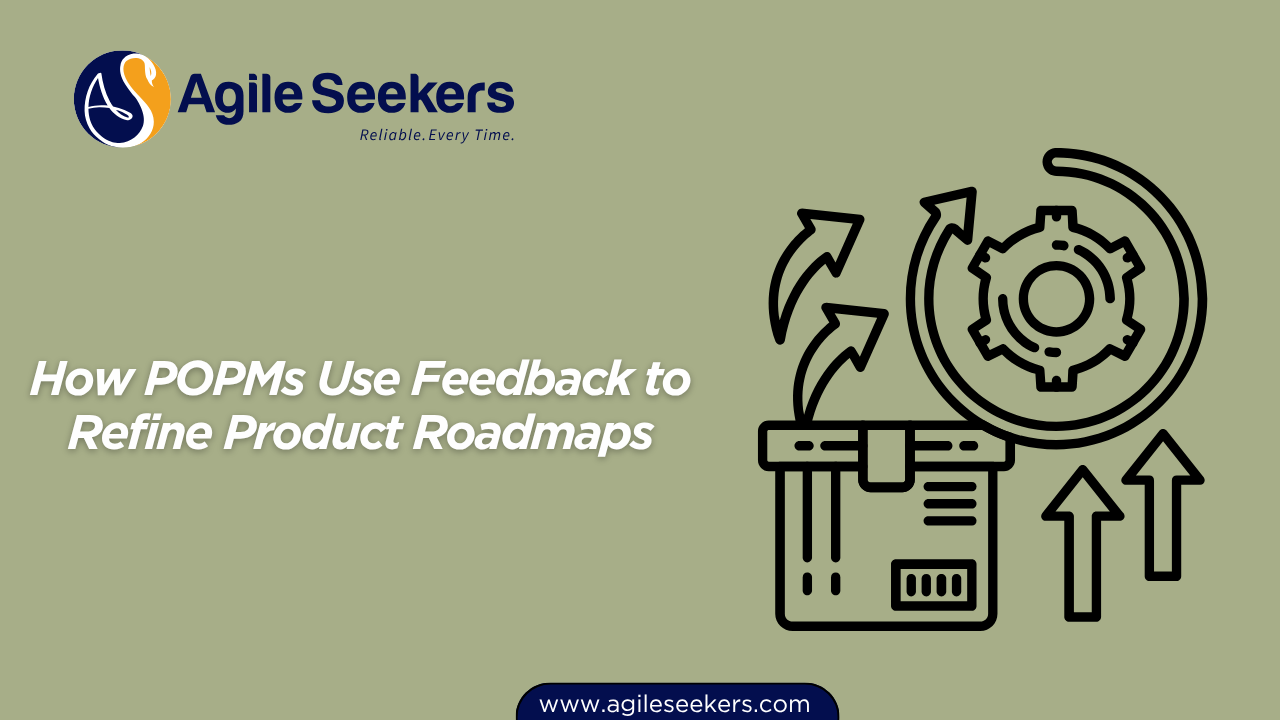How POPMs Use Feedback to Refine Product Roadmaps

A product roadmap is never a final document. It evolves as we learn more about customers, technology limits, business priorities, and market conditions.
The real responsibility of a SAFe Product Owner/Product Manager (POPM) is not just planning features but continuously refining direction based on real feedback that comes from actual product usage and stakeholder interactions.
This is why many professionals choose to pursue POPM certification. It provides the mindset and structure needed to collect, analyze, and act on feedback effectively.
Feedback as the Driver of Roadmap Evolution
Feedback is not just opinions or suggestions. It is information that helps validate whether the current roadmap still aligns with business outcomes and customer needs. A roadmap created once and never revisited becomes irrelevant quickly. Feedback ensures that prioritization is tied to real value, not assumptions.
But not all feedback carries the same weight. The POPM’s skill lies in identifying which signals indicate meaningful change and which are simply noise.
The Core Feedback Loop for POPMs
Think of the feedback process as a loop that never ends:
- Collect feedback from multiple perspectives.
- Interpret and validate what the feedback is really telling you.
- Update the backlog and roadmap accordingly.
- Communicate changes clearly to stakeholders and teams.
Skipping any step harms alignment and delivery outcomes. The feedback loop keeps strategy and execution in sync.
Where Feedback Comes From
POPMs gather feedback from various sources inside and outside the organization:
| Source | Insight Provided | How It Influences Roadmap Decisions |
|---|---|---|
| Customer Conversations | Needs, priorities, language patterns | Shapes problem statements |
| Usage Analytics | Real behavior vs expected behavior | Validates assumptions about feature value |
| Support Tickets | Common friction points | Identifies areas requiring improvement |
| Sales and Presales Teams | Objections during conversion | Exposes gaps in competitive fit |
| Team Demos in Iterations | Delivery challenges and effort drivers | Influences backlog slicing and sequencing |
Relying on a single source (like only customer requests or only leadership direction) creates a biased roadmap. The POPM integrates all these inputs to create a balanced view.
Interpreting Feedback Without Overreacting
Here’s the real challenge: not all feedback requires change.
The POPM must distinguish between:
- A widely experienced problem
- A one-person inconvenience
- Resistance to new processes
- A feature misused due to lack of clarity
The question to ask is always: Does this feedback meaningfully improve the product outcome?
This analytical approach is strengthened during structured learning like SAFe Product Owner and Manager Certification, where you learn how to evaluate feedback objectively.
Turning Feedback into Roadmap Adjustments
Roadmaps balance customer value, business strategy, feasibility, and timing. When feedback suggests a change, the POPM considers:
- Does this change align with strategic objectives?
- Which backlog items need to move up or down in priority?
- What trade-offs are required?
- How do dependencies across the Agile Release Train affect scheduling?
This careful balancing act is why many develop skills through POPM certification Training, which covers practical prioritization and backlog refinement techniques.
Real Example of Feedback Driving a Roadmap Change
A fintech platform noticed that users frequently dropped off during the comparison step of their product selection flow. Support feedback suggested the process felt confusing. Instead of redesigning the feature entirely, the POPM observed real usage sessions and confirmed the issue was friction in navigating multiple screens.
The solution was a single-screen comparison view. The result: measurable conversion improvement without large engineering investment.
Communicating Roadmap Changes Clearly
Updating the roadmap is only half the work. The POPM must also ensure that:
- Teams understand why priorities shifted.
- Stakeholders see how adjustments tie to outcomes.
- Customers (where appropriate) are kept informed of improvements.
Transparency avoids rework, misalignment, and conflict. Effective communication is a core part of becoming a stronger product owner certification professional.
Common Mistakes When Handling Feedback
- Treating every request as equally important
- Relying only on verbal input instead of usage data
- Not considering technical constraints during reprioritization
- Failing to explain the rationale behind roadmap changes
Refinement is not about reacting quickly. It is about responding thoughtfully.
Closing Thought
Feedback is not a distraction from roadmap planning. It is the engine that keeps the roadmap meaningful. POPMs who actively listen, evaluate carefully, and adjust with clarity help their organizations build products that deliver real value.
Refining a roadmap is not a one-time effort. It is a continuous, strategic discipline grounded in learning.
Also read - Developing a Product Vision Aligned with Enterprise Strategy
Also see - Understanding Agile Economics as a SAFe POPM




















